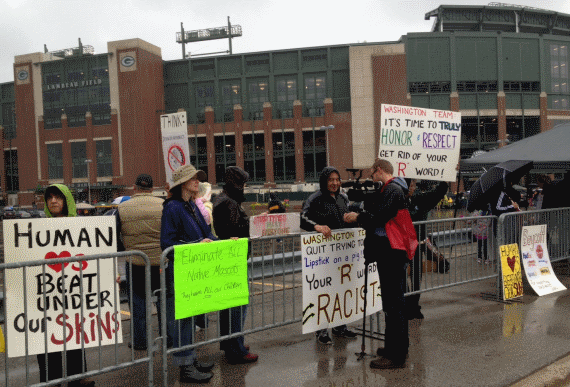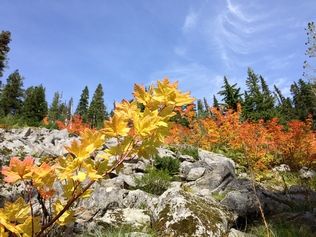By Akilah Kinnison, Indian Country Today Media Network
Today, 306 members of the Nooksack Indian Tribe in northern Washington State are fighting mass disenrollment from their community. For the Nooksack 306, as they have come to be known, this struggle encompasses more than tribal citizenship – it is about their most fundamental human rights as indigenous peoples.
For some of the Nooksack 306, citizenship is literally a matter of life and death. As previously reported by Indian Country Today Media Network, Sonia Lomeli is a 74-year-old diabetic who lives on tribal land and depends on tribal medical care including transportation to kidney dialysis. Ms. Lomeli has stated, “I am afraid I will die if they disenroll me.” Mr. Terry St. Germain, a 48-year-old fisherman with eight children, worries he will not be able to feed his family if stripped of his tribal fishing and hunting rights.
The pending disenrollments have already had immediate effects. According to the Nooksack 306, some members have already been fired from their jobs or denied housing; their livelihoods are being destroyed. In a callous move a few weeks ago, just before the start of the new school year, the Tribal Council denied school supply stipends to all Nooksack children aged 3 to 19 who are proposed for disenrollment.
Pitted against their own tribe by a prevailing tribal council faction, the Nooksack 306 are battling to maintain their cultural identity as indigenous peoples – a right guaranteed under international human rights law. In their pursuit of disenrollment, the tribal government is violating the Nooksack 306’s rights to live in community, to due process, and to equal protection.
It is well-established that tribes have the right to determine their own citizenship. This was recognized by the U.S. Supreme Court in 1978 in Santa Clara Pueblo v. Martinez as well as in the United Nations Declaration on the Rights of Indigenous Peoples (“UN Declaration”), which the United States endorsed in 2010. Article 33 of the UN Declaration states, “[i]ndigenous peoples have the right to determine their own identity or membership in accordance with their customs and traditions.”
The Nooksack Tribe’s undisputed right to determine its own citizenship is not, however, the only right at stake. The fundamental human rights of the Nooksack 306 also weigh heavily in the balance. Under Article 9 of the UN Declaration, “indigenous peoples and individuals have the right to belong to an indigenous community or nation, in accordance with the tradition and customs of the community or nation concerned. No discrimination of any kind may arise from the exercise of such a right” (emphasis added).
Similarly, Article 27 of the International Covenant on Civil and Political Rights (“ICCPR”), a binding treaty ratified by the United States in 1992, mandates that “[i]n those States where ethnic, religious or linguistic minorities exist, persons belonging to such minorities shall not be denied the right, in community with the other members of their group, to enjoy their own culture, to profess and practice their own religion, or to use their own language” (emphasis added).
To illustrate, in Lovelace v. Canada, the UN Human Rights Committee, which monitors ICCPR implementation, found that Canada’s Indian Act violated Article 27 by terminating an indigenous woman’s tribal citizenship when she married a non-indigenous man. The Lovelace decision confirms that, under international law, indigenous individuals have a right to live in community with their fellow tribal people and that this right is critical to maintaining indigenous identity and culture.
Yet, rather than respecting the Nooksack 306’s international human rights, the Tribal Council has gone so far as to amend the Nooksack Constitution in an attempt to eliminate the 306’s indigenous right to citizenship. The Tribal Council has also passed several new tribal laws and amended Nooksack judicial, appellate, and election codes in ways that appear designed to strip the Nooksack 306 of their ability to have a voice before the tribal courts or polity. For instance, the ever-shifting rules of the game were recently amended to allow proposed disenrollees only 10 minutes by teleconference to make their case that they are rightfully Nooksack, and without the assistance of lawyers or family members.
Most significantly, the disenrollments are not proceeding “in accordance with the traditions and customs of the community” as required by UN Declaration Articles 33 and 9. The disenrollment process appears, according to the Nooksack 306, to violate tribal customary and constitutional law. Since early 2013, Nooksack Chairman Bob Kelly has been operating outside the bounds of the Nooksack Constitution, refusing to hold constitutionally mandated meetings of the Tribal Council or the entire Nooksack People at which disenrollment could be discussed. Such measures violate due process, a right guaranteed by Articles 7 and 14 of the ICCPR as well as other international law.
Further, the Nooksack 306 seem to have been targeted, at least in part, because they are of mixed Filipino-Nooksack ancestry, even though each is at least one-quarter indigenous as previously required under the Nooksack Constitution. The tribe has not been pursuing the mass disenrollments of persons of non-Filipino mixed Nooksack ancestry. The controlling Nooksack Council faction disputes that the disenrollments are racially motivated. However, an October 2000 LA Times article, entitled “Nooksacks Allege Filipino Family Has Conquered Tribe From the Inside” and the Council’s lawyers’ public reliance on the piece, illustrates that this rivalry, a long-running and significant feature of Nooksack politics, is at least partially motivated by racial animus. This animus is also evidenced by the fact that prior to a vote to amend the tribal constitution’s membership criteria this past summer, Chairman Kelly sent certain election materials only to non-Filipino Nooksack members.
Discriminatory disenrollment contravenes UN Declaration Article 9’s prohibition of discrimination “of any kind” in the exercise of the right to live in community and Article 2’s affirmation that indigenous “individuals . . . have the right to be free from any kind of discrimination.” It also violates the International Convention on the Elimination of All Forms of Racial Discrimination (“ICERD”), ratified by the United States in 1994. ICERD Article 5, for instance, protects individuals’ exercise of political, civil, economic, and social rights as well as rights to land and culture under conditions of equality. In the inter-American system, the American Declaration on the Rights and Duties of Man, applicable to the U.S. by virtue of membership in the Organization of American States, protects the right to equality in Article II and the right to “take part in the cultural life of the community” in Article XIII.
The right to live in community is, in many ways, indigenous peoples’ most fundamental human right because it is critical to maintaining their identity and ways of life. It is this right that permits the Nooksack 306 to live on their traditional lands and to participate in the cultural and political life of their nation. Without the threshold right to citizenship, other protections for indigenous peoples’ human rights are rendered ineffective.
The Nooksack 306 could pursue claims against the United States for failing to protect these human rights, but to date they have chosen to contest their disenrollment primarily in tribal court, insisting that their own government respect internationally recognized human rights even if it is not directly bound by international instruments.
The Nooksack 306 have insisted, from the beginning, that theirs is a struggle to have their tribal government and court system recognize that, in their words, “We Belong.” Thus, the issue in this case is the tribal government’s responsibility to protect its citizens’ human rights by acknowledging that the right to determine citizenship is neither the only right at stake nor an unqualified right. In the interest of good governance, non-discrimination, and cultural survival, the right to determine citizenship should be exercised with an eye toward honoring and protecting indigenous individuals’ human rights to live in community within their nations. Hopefully that honor and protection will be afforded the Nooksack 306 once all is said and done.
Akilah Kinnison holds an LL.M. in Indigenous Peoples Law and Policy from the University of Arizona’s Indigenous Peoples Law and Policy Program. She currently works as an independent contractor and consultant in the fields of federal Indian law, international human rights, and indigenous peoples’ law.
Read more at https://indiancountrytodaymedianetwork.com/2013/10/08/fighting-disenrollment-nooksack-306













